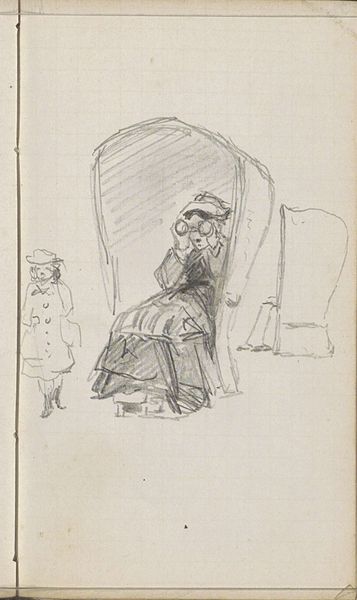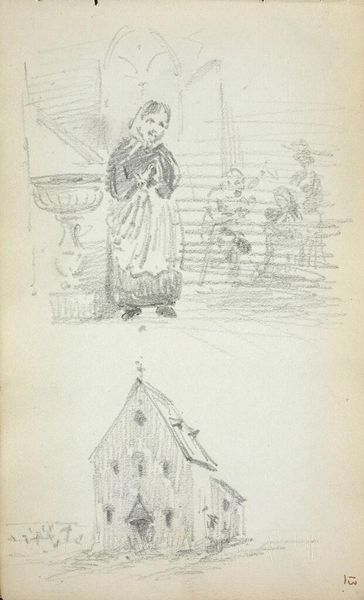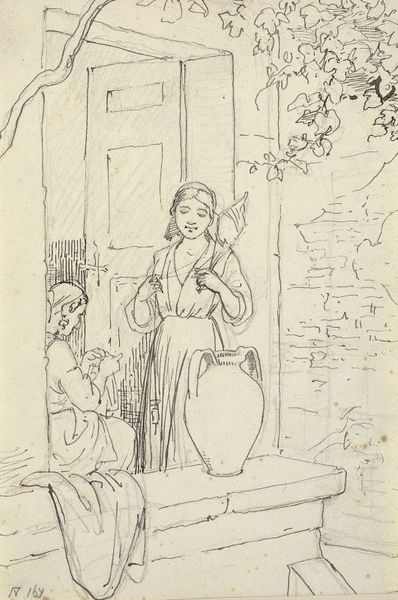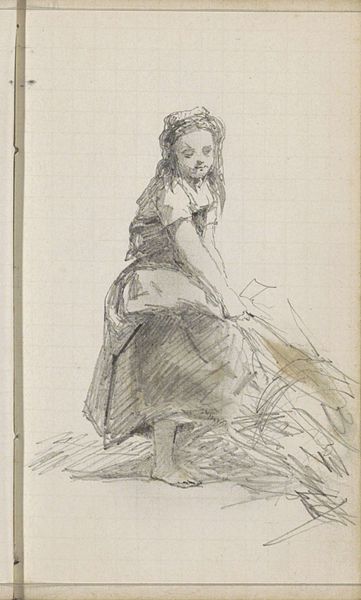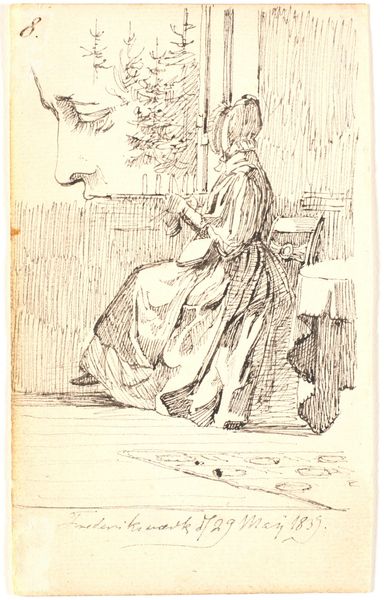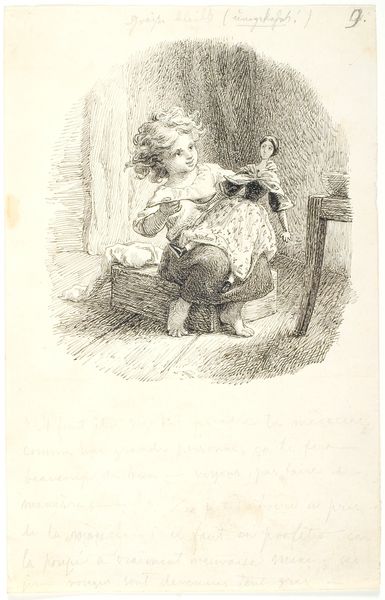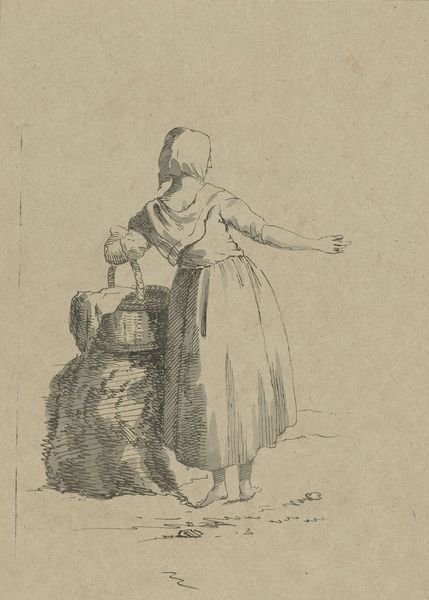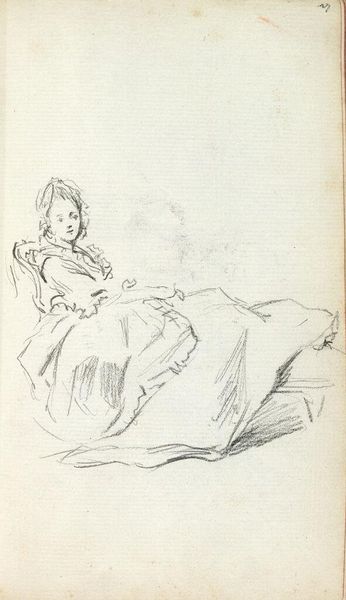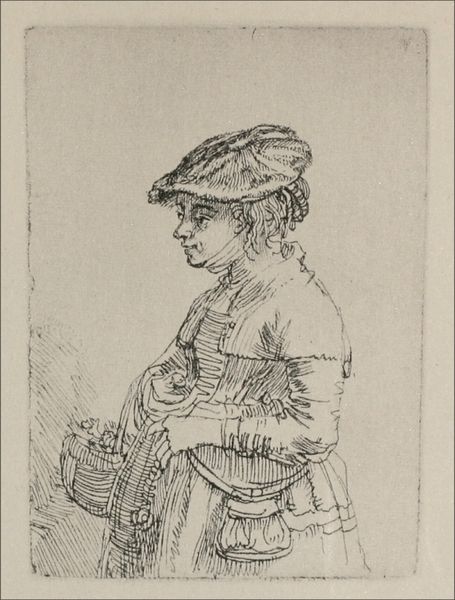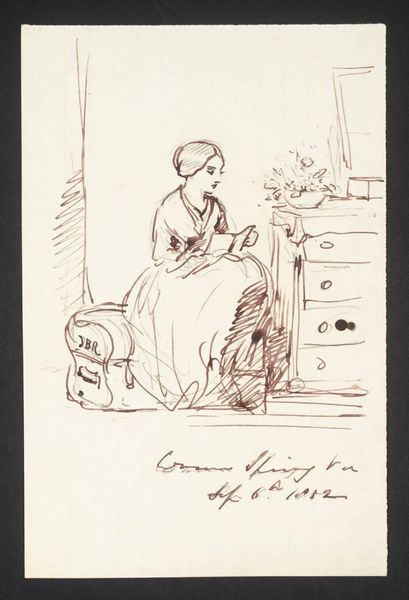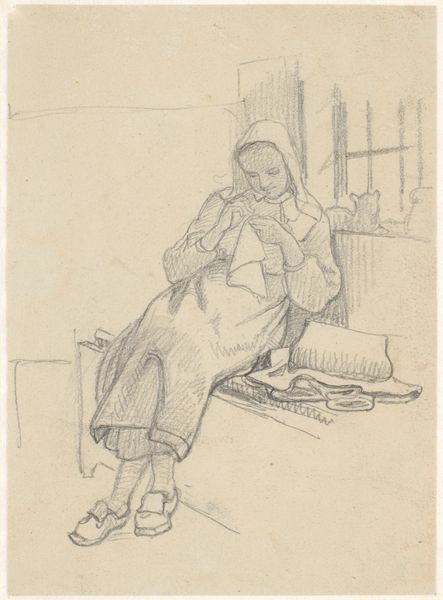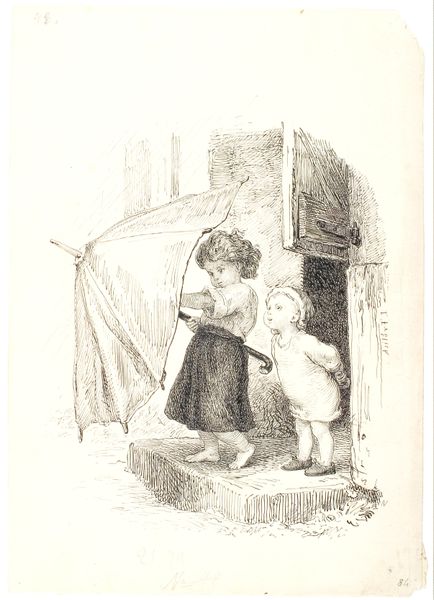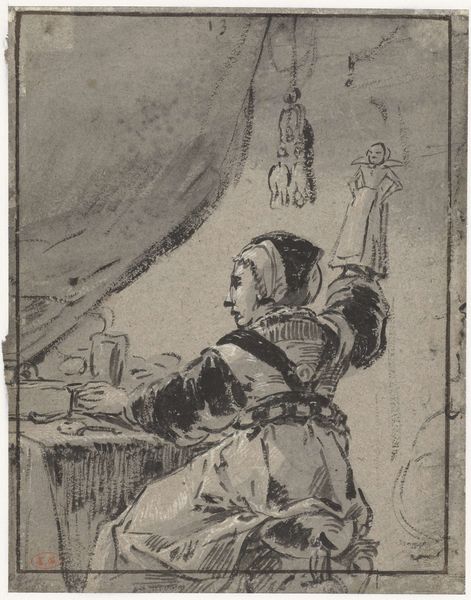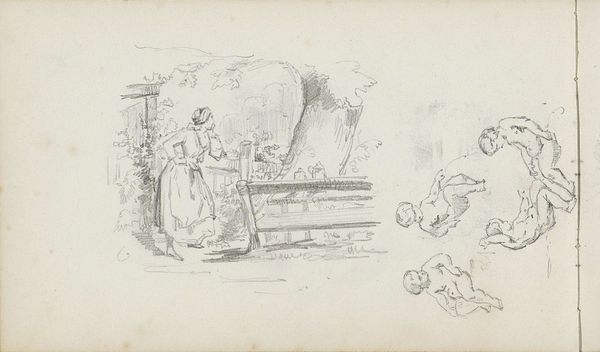
drawing, paper, pencil
#
portrait
#
drawing
#
toned paper
#
quirky sketch
#
sketch book
#
paper
#
personal sketchbook
#
idea generation sketch
#
sketchwork
#
pen-ink sketch
#
pencil
#
sketchbook drawing
#
genre-painting
#
storyboard and sketchbook work
#
sketchbook art
#
realism
Copyright: Rijks Museum: Open Domain
Curator: This is "Girl with a Cage Beside a Gate," a pencil and pen-ink sketch on toned paper, created by Jan Willem van Borselen sometime between 1868 and 1878. It’s part of the Rijksmuseum's collection. Editor: My first impression is that this piece has a poignant stillness. There’s something fragile in the girl's posture, the way she clutches that cage, like she herself is contained. The sparse color adds a layer of…resignation, perhaps? Curator: That reading is interesting. Borselen, working within a tradition of realism, often depicted everyday scenes of Dutch life. The cage, potentially homemade, speaks to the tangible, material culture. One could examine the gendered division of labor inherent in this scene. Is the girl’s labor seen as leisure, bound up with notions of childhood innocence? Editor: The homemade nature of the cage—the weaving, the securing—suggests skill and a deliberate process. Yet, it's purpose, the potential imprisonment, can it be seen as a broader social metaphor, trapping marginalized peoples or simply capturing moments of life as artistic study? Who is afforded freedom in this context? Curator: The cage can serve as a point of discussion around gender and captivity, as Borselen's narrative implicates themes related to domesticity and labor practices specific to girls in rural life. The subtle lines of the sketch are what allow him to reveal the texture of labor at this intersection of history, material and being. Editor: And is it then to be also questioned how her labor also exists to satisfy a leisure that is the painterly investigation in “genre painting?" I am left also wondering what were these working drawings made on paper that was toned and the intention, considering materials and process, was something larger. Curator: Looking closely at "Girl with a Cage" has highlighted how everyday objects like a simple birdcage can be incredibly rich sites for exploring questions around identity, freedom, and the unspoken dimensions of labor. Editor: For me, it underscores the way seemingly humble materials can become profound instruments for social commentary and, more importantly, invite a closer look into lives often relegated to the background.
Comments
No comments
Be the first to comment and join the conversation on the ultimate creative platform.
